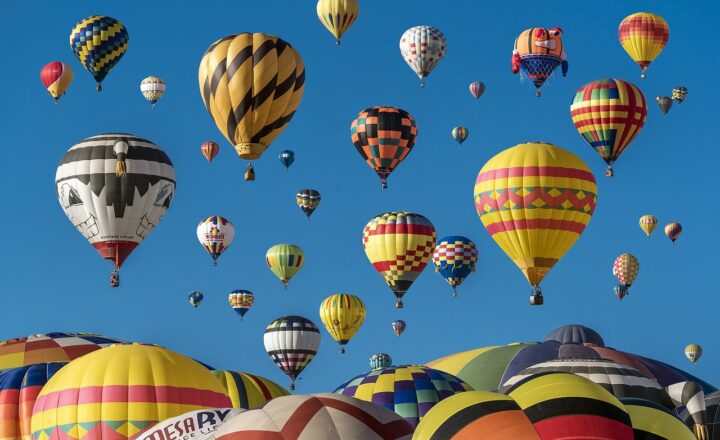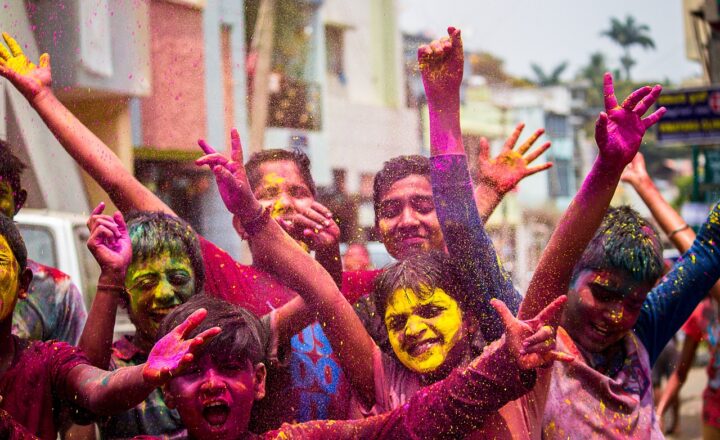Exploring Global Traditions: Unique Festivals From Around the World
November 19, 2024

Festivals are a vibrant expression of culture, heritage, and community spirit. They bring people together to celebrate, remember, and participate in local traditions that can often span centuries. From the magnificent parades of Rio de Janeiro to the quiet solemnity of Diwali, festivals provide a unique glimpse into the soul of a region. This article delves into some of the most unique festivals globally, their history, significance, and the joyous celebrations that unfold during these events.
1. Carnival in Rio de Janeiro, Brazil
The Rio Carnival is perhaps the world’s most famous festival, characterized by its extravagant parades, vibrant music, and joyous dancing.
Held before Lent each year, the celebrations typically attract millions of locals and tourists alike. The heartbeat of the carnival is the samba parade, held at the Sambadrome, where samba schools compete for glory with elaborate floats and dazzling costumes.
- History: The origins of the carnival can be traced back to the Portuguese colonization of Brazil, incorporating African and indigenous traditions as well.
- Significance: The festival symbolizes freedom, cultural expression, and social unity, allowing everyone to celebrate their identity irrespective of background.
As samba fills the air, the atmosphere transforms into a kaleidoscope of colors, laughter, and camaraderie.
2. Diwali: The Festival of Lights, India
Diwali, also known as the Festival of Lights, is one of the most significant Hindu festivals celebrated across India and amongst Indian communities worldwide. This five-day festival signifies the victory of light over darkness and good over evil.
- History: The festival is rooted in various legends, the most popular being the return of Lord Rama to Ayodhya after defeating the demon king Ravana.
- Significance: Lighting lamps, bursting firecrackers, and exchanging sweets symbolizes spreading joy, wealth, and positivity. Each region in India has its unique traditions, making Diwali a tapestry of local customs.
Diwali not only illuminates the night sky but also hearts around the world, encouraging generosity and kindness.
3. Oktoberfest, Germany
Oktoberfest is the world’s largest beer festival held annually in Munich, Germany. It’s a melange of beer, food, music, and festivities that attracts millions.
- History: The festival began in 1810 as a royal wedding celebration and has since evolved into a grand annual event lasting 16-18 days, starting late September and ending in the first weekend of October.
- Significance: Oktoberfest epitomizes Bavarian culture, showcasing traditional music, folk dances, and, of course, an array of local beers and culinary delights.
Families, friends, and travelers come together, sharing laughter and toasting in enormous beer tents, creating memories in true German fashion.
4. Harbin Ice and Snow Festival, China
The Harbin Ice and Snow Festival in Heilongjiang province, China, is a breathtaking winter celebration known for its colossal ice sculptures.
- History: Originating in 1963 but officially established in 1985, the festival showcases the artistry of local ice carvers, transforming blocks of ice into stunning structures that light up at night.
- Significance: This festival not only celebrates the beauty of winter but also brings attention to the rich culture and the resilience of the local community in extreme weather conditions.
Visitors can explore a winter wonderland featuring castles, slides, and sculptures while embracing the charm of the frosty season.
5. La Tomatina, Spain
La Tomatina is the world’s biggest food fight held in the small town of Buñol, Spain. Each year, thousands gather to participate in this chaotic tomato-throwing festival.
- History: La Tomatina began in 1945 during a local festival, gradually evolving into a full-blown event and has been celebrated on the last Wednesday of August since then.
- Significance: The festival represents the ultimate expression of fun, camaraderie, and community spirit – it’s a day where everyone can let loose and engage in light-hearted play.
As the sun shines, the streets transform into a sea of red where laughter and joy reign supreme.
6. Holi: The Festival of Colors, India
Holi is a spring festival celebrated primarily in India, known for its exuberant celebrations where participants throw colored powders and water at each other.
- History: Holi finds its roots in Hindu mythology, representing the triumph of good over evil and celebrating the arrival of spring.
- Significance: This festival serves as a reminder of the beauty of human relationships, breaking barriers, and bringing people together in joyous celebration, making it a day of forgiveness and renewal.
As vibrant hues fill the air, Holi symbolizes love, unity, and joy in the hearts of all participants.
7. Running of the Bulls, Spain
The San Fermín festival in Pamplona, Spain, is renowned for its fiery Running of the Bulls, where brave participants run ahead of a group of bulls on the streets.
- History: This festival dates back to the 14th century and honors Saint Fermín, the patron saint of Navarre. The event became famous internationally in the 20th century.
- Significance: Although it includes dangerous bull runs, the festival is also rich in cultural elements such as music, dance, and local gastronomy, offering a holistic experience of Spanish tradition.
Visitors flock to witness this thrilling spectacle while savoring traditional tapas and reveling in festivities.
Conclusion
Festivals around the world encapsulate the spirit of humanity—celebrating joy, heritage, and cultural expressions that shape societies. They reflect individual and communal identities, inviting everyone to partake in an extraordinary dance of colors, flavors, and sounds. Participating in these unique festivals allows us to experience life from diverse perspectives while fostering a sense of global community. So pack your bags and plan your adventures, because the world’s festivals await you!






